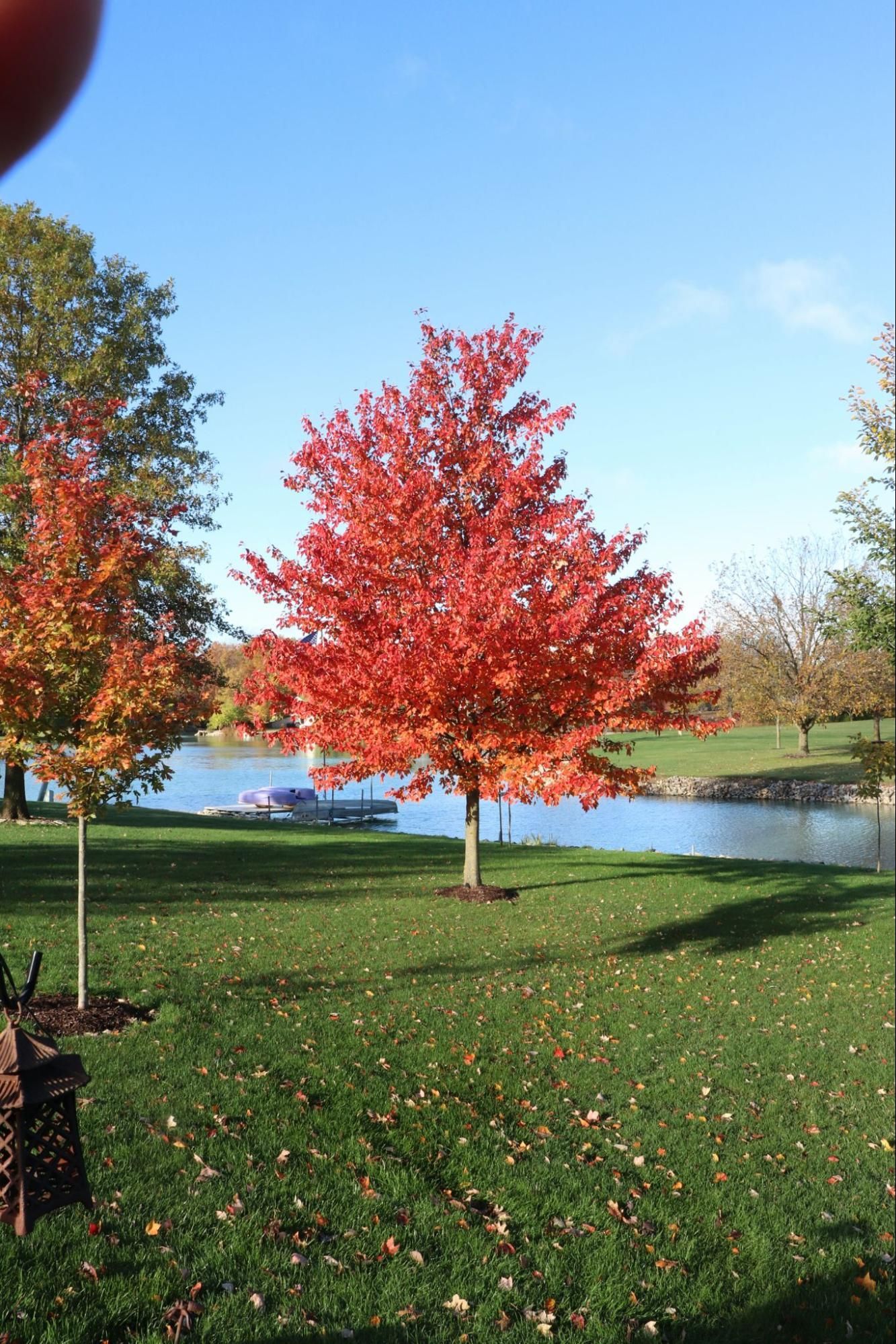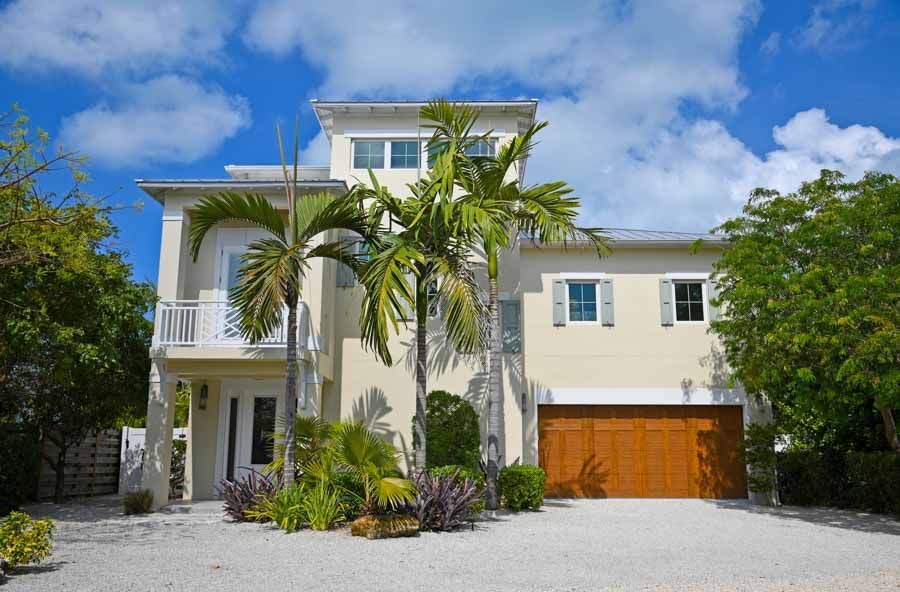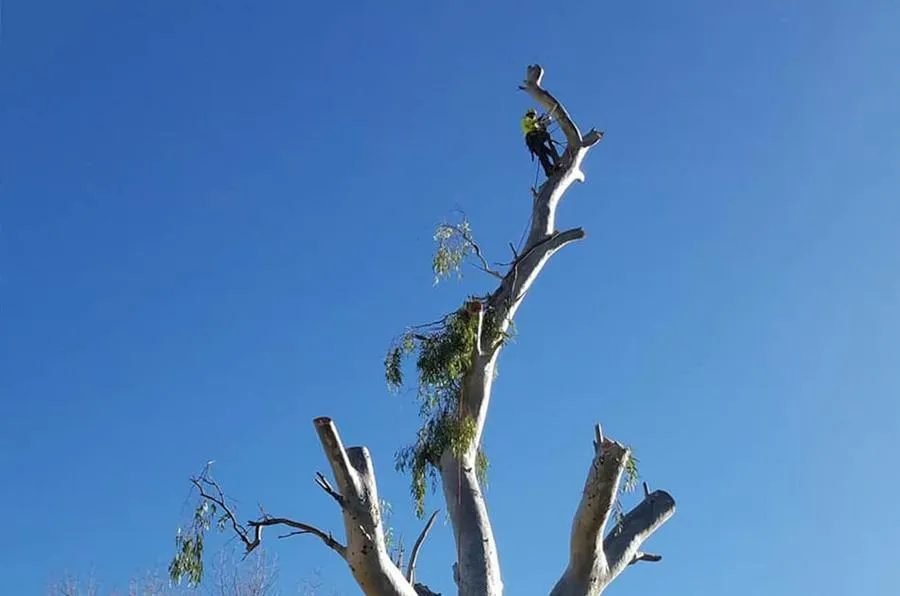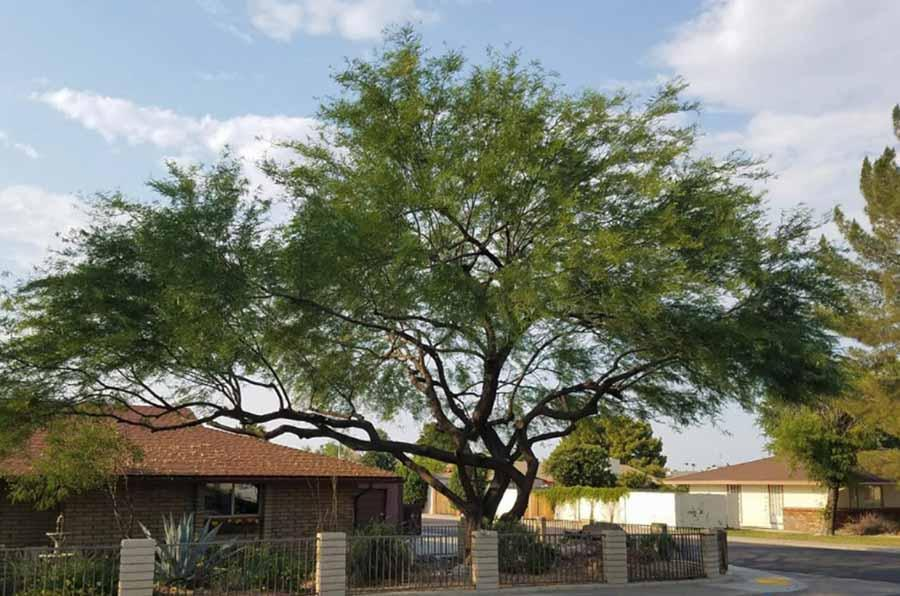Bassett Tree Service Blog
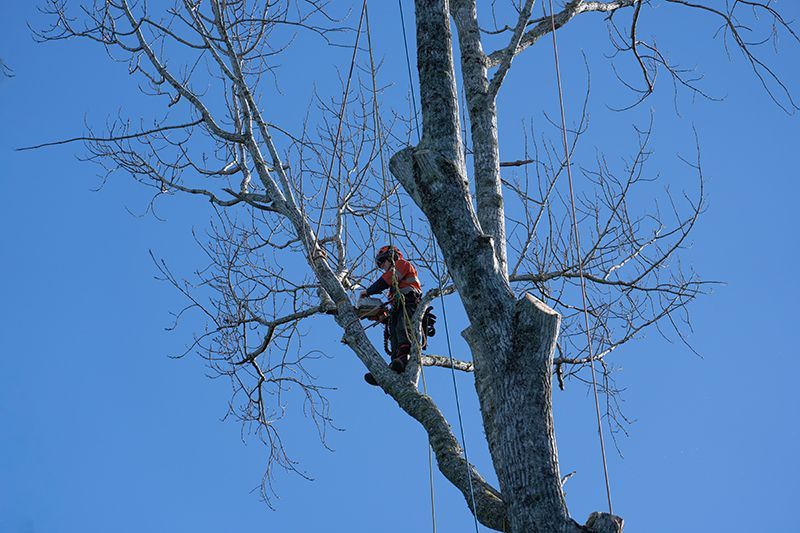
A dead tree in your yard is more than just an unattractive sight. While it may seem harmless to let it stand, dead trees can quickly become dangerous if left unattended. They pose risks to your property, your safety, and even the surrounding landscape. Professional removal ensures that the job is done safely and completely, giving you peace of mind and preventing further issues. At Bassett Tree Service, we provide expert tree removal in the greater Mesa, AZ area. Here are four reasons why dead trees should be removed without delay. Protect Your Home from Damage Dead trees lose their structural strength over time, making them prone to breaking or collapsing during storms or high winds. A falling trunk or heavy branch can cause significant damage to your home, roof, vehicles, or other structures on your property. Professional removal eliminates the risk before a storm has the chance to bring the tree down unexpectedly. Prevent Safety Hazards Beyond property damage, dead trees pose serious safety hazards to anyone nearby. Children playing in the yard, guests visiting your home, or even passersby could be injured if a branch falls or the tree collapses. By hiring professionals to remove the tree, you prevent these dangers and help ensure a safe environment around your property. Enhance Curb Appeal A dead tree diminishes the beauty of your property and makes your yard look neglected. Removing it instantly improves your home’s curb appeal, creating a more polished and welcoming outdoor space. For homeowners considering selling, this step is especially important, as dead trees may reduce the value of your property in the eyes of potential buyers. Stop the Spread of Pests and Disease Dead trees often become breeding grounds for pests such as termites, beetles, or carpenter ants. These pests can eventually migrate into your home or attack other healthy trees in your yard. Also, tree diseases that killed one tree may spread to others nearby. Professional removal of the dead tree and its stump helps stop infestations and prevents disease from spreading through your landscape. Tree Removal in Mesa, AZ For expert tree removal in Mesa, AZ and the surrounding area, contact Bassett Tree Service at 480-745-2290 . Feel free to give us a call to arrange an arborist estimate in Mesa, Phoenix, and the surrounding area!

Sometimes, a tree’s condition can pose a real danger to people and surrounding structures. Recognizing the signs of a hazardous tree is crucial for preventing accidents and avoiding costly damage. At Bassett Tree Service, we provide hazardous tree removal in the greater Mesa, AZ area. Here are five warning signs that a tree on your property may be a safety risk. Significant Leaning A tree that is noticeably leaning—especially if it wasn’t leaning before—can be a sign of serious structural weakness or root instability. While some trees naturally grow at an angle, a sudden or increasing lean often indicates that the tree is losing its ability to support its own weight, making it more likely to fall during a storm or high winds. Splits in the Trunk Deep cracks, splits, or cavities in a tree’s trunk can severely weaken its structural integrity. These issues may result from storm damage, disease, or old age. A compromised trunk can fail unexpectedly, causing large sections—or the entire tree—to come down without warning. Dead/Falling Branches Frequent falling branches or a canopy filled with dead limbs are clear signs of decline. Dead branches are brittle and can break off easily, posing a risk to anyone below. If large sections of the tree’s canopy are dead, it often points to underlying health problems that could lead to the tree’s complete failure. Root Damage or Decay Healthy roots are essential for a tree’s stability and nutrient intake. Signs of root trouble include visible decay at the base of the trunk or soil movement around the tree after strong winds. Root damage can make a tree unstable, increasing the likelihood of it toppling over. Signs of Disease or Infestation Diseases and pests can weaken a tree from the inside out. Common indications include discolored leaves, unusual bark patterns, or the presence of boring insects. Left untreated, these problems can spread to other trees and further compromise the affected tree’s health and stability. Tree Removal in Mesa, AZ For expert tree removal in Mesa, AZ and the surrounding area, contact Bassett Tree Service at 480-745-2290 . Feel free to give us a call to ask for an arborist estimate in Mesa, Phoenix, and the surrounding area!
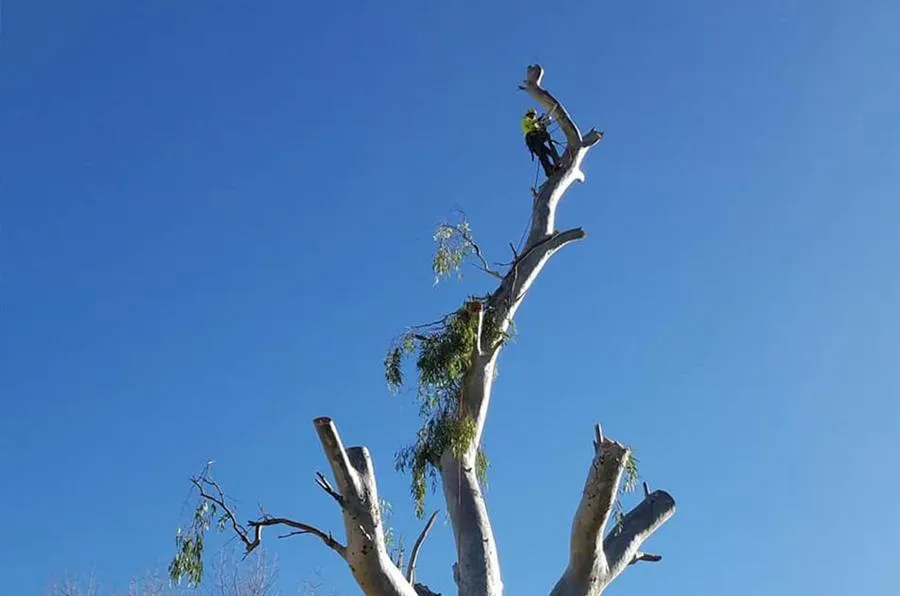
Dead trees are more than just eyesores—they can be serious safety hazards. Whether on residential or commercial property, a dead tree is vulnerable to falling branches or total collapse, especially during storms or high winds. Spotting the signs of a dead tree early can help prevent accidents and property damage. At Bassett Tree Service, we specialize in tree removal in the greater Mesa, AZ area. If you notice any of the following warning signs, it's important to contact a certified arborist to assess the situation and perform a safe removal if necessary. No Leaf Growth During the Growing Season One of the clearest indications that a tree is dead is the complete absence of leaves during the growing season. If other nearby trees of the same species are full of green foliage while this one remains bare, it’s likely no longer alive. Even deciduous trees that lose their leaves in the fall should show buds or leaf growth in spring. If there's no sign of life when there should be, the tree may be beyond saving. Bark Is Falling Off in Large Sections Healthy trees renew their bark, but a dead tree will often lose its bark in large, patchy areas. If you notice that bark is peeling off and not being replaced, or if the trunk feels brittle, that’s a strong indication of decay. The trunk may also develop deep cracks or cavities, which further suggest structural instability and death. Large Branches Are Dry and Brittle Dead trees often have branches that snap easily with no flexibility. Try breaking off a small branch from the tree. If it’s dry, brittle, and snaps without any moisture inside, it’s likely dead. In contrast, living branches will bend slightly and reveal green tissue inside. If multiple limbs are brittle or breaking off frequently, the entire tree may be dead or dying. Fungal Growth Around the Base Fungal growth at the base of a tree is often a sign of internal decay. While not all mushrooms indicate death, certain types that grow on or near the roots or trunk can mean the tree is rotting from the inside out. When internal rot sets in, the structural integrity of the tree is compromised, making professional removal crucial to ensure safety. Tree Removal in Mesa, AZ For expert tree removal in Mesa, AZ and the surrounding area, contact Bassett Tree Service at 480-745-2290 . Feel free to give us a call to ask for an arborist estimate in Mesa, Phoenix, and the surrounding area!

Old tree stumps may seem harmless, but they can actually detract from the safety, appearance, and functionality of your yard. Hiring a professional to remove them is a smart investment that offers both immediate and long-term benefits. At Bassett Tree Service, we specialize in stump grinding and removal in the greater Mesa, AZ area. Here are five ways that getting rid of tree stumps can enhance your property. Boosts Curb Appeal A clean, well-maintained yard makes a strong first impression. Tree stumps, especially those that are rotting or overgrown with weeds, can make your landscaping look neglected. Removing stumps gives your yard a smoother, tidier appearance that highlights the beauty of your lawn and other plantings. Improves Lawn Safety Tree stumps pose a tripping hazard, particularly for children and anyone doing yard work. They can also damage lawn equipment if accidentally hit. As stumps begin to decay, they may develop holes or soft spots that make walking across the lawn more dangerous. By removing them, you eliminate these risks and create a safer outdoor space for everyone to enjoy. Prevents Pest Infestations As stumps decompose, they often become a magnet for insects like termite and ants. These pests may eventually spread to healthy trees, garden beds, or even your home’s structure. Removing a stump reduces the likelihood of attracting pests in the first place, helping protect your property from infestations that can lead to significant damage. Increases Usable Yard Space A leftover stump takes up valuable space in your yard that could be used more productively. Once it’s removed, you’ll have more options for landscaping, gardening, outdoor seating, or play areas. Stump removal opens the door to new possibilities, whether you want to plant a new tree or expand your lawn for recreational use. Stops Unwanted Tree Growth It’s common for new shoots or “suckers” to sprout around a tree stump. These shoots are often difficult to control and can compete with nearby plants for nutrients. Left unchecked, they can grow into messy, multi-stemmed bushes that require constant trimming. Removing the stump helps eliminate the roots’ ability to regenerate and ensures that the original tree doesn’t try to come back in unwanted ways. Stump Grinding & Removal in Mesa, AZ For expert stump removal in Mesa, AZ and the surrounding area, contact Bassett Tree Service at 480-745-2290 . Feel free to give us a call to ask for an arborist estimate in Mesa, Phoenix, and the surrounding area!

When it comes to landscaping in Mesa, small palm trees can make a big impact. Their sculptural beauty and desert-friendly qualities make them ideal for adding a touch of the tropics without overwhelming your outdoor space. Better yet, many small palms thrive in the hot, dry climate of the Sonoran Desert, making them low-maintenance and water-wise choices for your yard. When you need palm tree care in Mesa, AZ, or the surrounding areas, give the team at Bassett Tree Service a call. Pygmy Date Palm (Phoenix roebelenii) The pygmy date palm is a favorite among homeowners for good reason. Topping out at around 10 feet, it’s compact, elegant, and perfect for patios or entryways. It grows well in containers and does best with partial shade, though it can handle full sun if needed. With its feathery fronds and graceful trunk, it adds a soft, refined look to any landscape. Mediterranean Fan Palm (Chamaerops humilis) One of the hardiest palms out there, the Mediterranean fan palm is both cold- and drought-tolerant, which is ideal for Arizona’s fluctuating desert weather. It grows in clusters, forming a multi-trunked shape that maxes out around 15 feet. Its fan-like leaves bring texture and structure to desert landscapes, and it pairs well with native plants and decorative rock. Windmill Palm (Trachycarpus fortunei) While less common in the desert, the windmill palm can thrive in Mesa with proper placement and care. It prefers some protection from intense afternoon sun, making it great for north- or east-facing yards. With its fuzzy trunk and upright, fan-shaped leaves, it has a distinctly tropical look in a smaller footprint. It usually grows up to 20 feet, but it is often trimmed shorter. Bottle Palm (Hyophorbe lagenicaulis) For a bold, sculptural statement, the bottle palm is a unique choice. Its swollen trunk and arching fronds stand out in xeriscaped yards. Keep in mind, this palm is less cold-tolerant, so it’s best planted in a sheltered location or grown in a container that can be moved when needed. Palm Tree Care in Mesa The certified arborists at Bassett Tree Service specialize in palm tree services in Mesa and the surrounding areas. Our local palm tree experts are highly skilled at caring for all species of palms, ensuring that they remain healthy year after year. Whether you need palm tree maintenance, palm tree removal, or other services for your palms, we can help. Give us a call at 480-745-2290 to learn more about our local tree company or to request an estimate for palm tree services near Phoenix.


